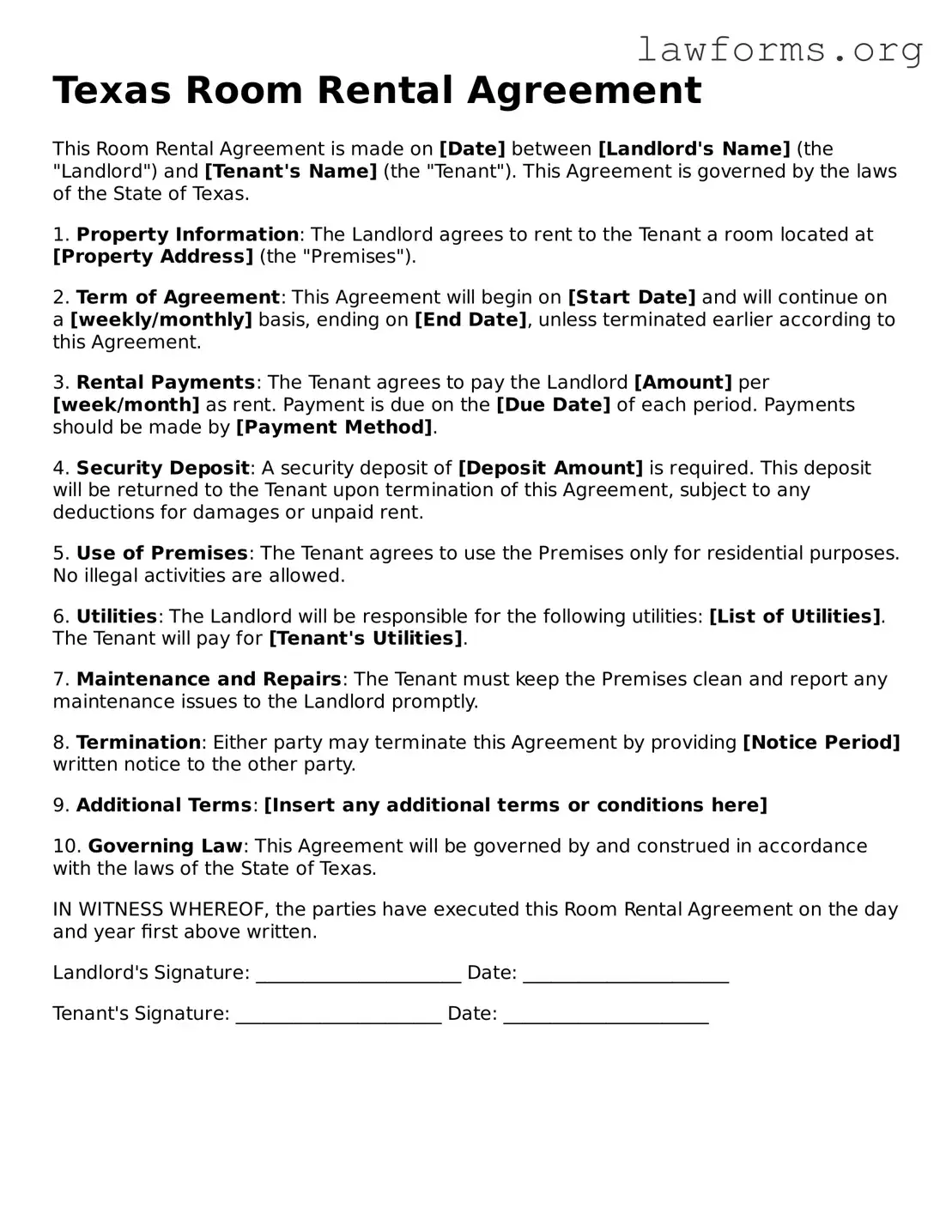Texas Room Rental Agreement
This Room Rental Agreement is made on [Date] between [Landlord's Name] (the "Landlord") and [Tenant's Name] (the "Tenant"). This Agreement is governed by the laws of the State of Texas.
1. Property Information: The Landlord agrees to rent to the Tenant a room located at [Property Address] (the "Premises").
2. Term of Agreement: This Agreement will begin on [Start Date] and will continue on a [weekly/monthly] basis, ending on [End Date], unless terminated earlier according to this Agreement.
3. Rental Payments: The Tenant agrees to pay the Landlord [Amount] per [week/month] as rent. Payment is due on the [Due Date] of each period. Payments should be made by [Payment Method].
4. Security Deposit: A security deposit of [Deposit Amount] is required. This deposit will be returned to the Tenant upon termination of this Agreement, subject to any deductions for damages or unpaid rent.
5. Use of Premises: The Tenant agrees to use the Premises only for residential purposes. No illegal activities are allowed.
6. Utilities: The Landlord will be responsible for the following utilities: [List of Utilities]. The Tenant will pay for [Tenant's Utilities].
7. Maintenance and Repairs: The Tenant must keep the Premises clean and report any maintenance issues to the Landlord promptly.
8. Termination: Either party may terminate this Agreement by providing [Notice Period] written notice to the other party.
9. Additional Terms: [Insert any additional terms or conditions here]
10. Governing Law: This Agreement will be governed by and construed in accordance with the laws of the State of Texas.
IN WITNESS WHEREOF, the parties have executed this Room Rental Agreement on the day and year first above written.
Landlord's Signature: ______________________ Date: ______________________
Tenant's Signature: ______________________ Date: ______________________
